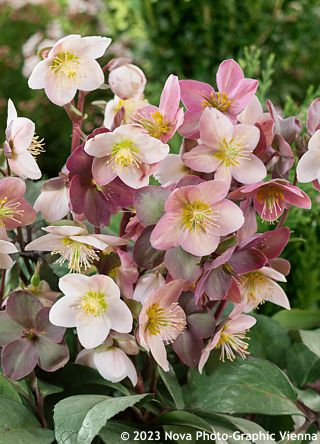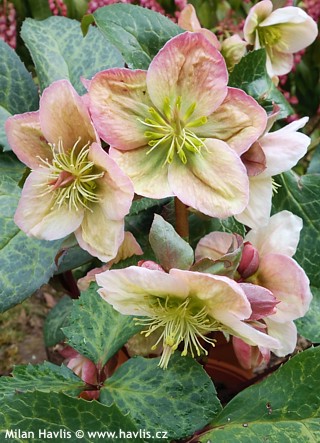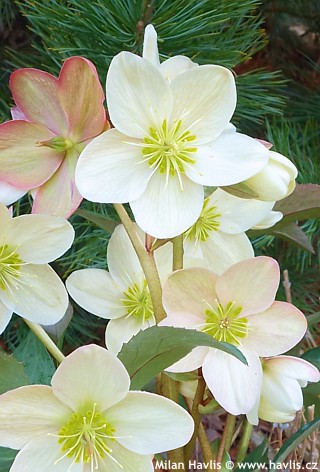Helleborus x ballardiae ('Coseh890') HGC MAESTRO® hellebore, Lenten rose


Helleborus
Hellebore (Lenten rose) is not a new plant to Czech and Slovak gardens. I remember those flowering stems that surprisingly pushed through the snow in late winter and I kept asking grandma how come that a plant can flower while there is still snow on the ground. These evergreen perennials are still very popular, mainly thanks to newly hybridized varieties with fantastic flowers. German nursery Heuger has been breeding Lenten roses since 1950’s. No wonder they are considered to be the top producers of these beautiful plants in Europe. Their Helleborus Gold Collection® (HGC) is a trade mark for the best inventions in the field of hybrid hellebores.Hellebore likes heavy, evenly moist, neutral to alkaline, rich in humus soil in dappled shade or filtered sun. This hybrid will prefer at least half a day with direct sunlight. Fertilizing will increase flowering and help the leaves remain strong and nice throughout the winter. Grow it somewhere near your house entrance or close to the window you look out of frequently so that you can enjoy the plant when it starts flowering since at that time the weather outside is not yet ideal for walking around the garden. The flowers can cheer up a number of grey and dull days of late winter therefore thumbs up for hellebore! Harmful if eaten. Hardy to about -27°C (USDA zone 5).
Last update 30-11-2016
Goods are shipped all over Europe. For Russia and U.K. and for further details please read about SHIPPING OPTIONS HERE.
Are you interested in a serious discount for orders NOV-FEB? Check your options here.
THE PRICES INCLUDE VAT of 15%. For quick conversion you can use 1 CZK = approx. 0.04 EUR
- STANDARD QUALITY - Plants of this group are 1st class quality with number of branches and overall density adequate to their size and age, considering they were container grown.
- DE LUXE QUALITY - This label guarantees a luxurious quality of manually selected plants that, compared to their height and age, are exceptionally dense and beautiful.
- EXTRA - These plants are usually mature and bigger specimens with exceptional overall appearance.
- STANDARD (as described in the plant form) means a tree with a trunk of 190-210 cm and a crown at the top, unless specified differently. The commercial size for trees is their girth measured in the height of 1m from ground.
- HOBBY - These plants are of the same quality as our standard-quality plants but younger and therefore cheaper.
- SHRUB - a woody plant with branches growing bushy from the ground level.
- HALF-STANDARD or MINI-STANDARD - a small tree with shorter trunk, its size is usually specified.
- FEATHERED - These are trees with branches growing already from the base of the trunk and up along the stem.
- GRASSES and PERENNIALS - Sizes given usually read the diameter of the pot or the clump, as specified.
















